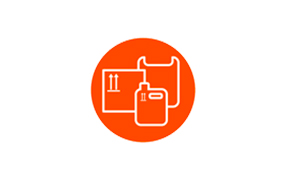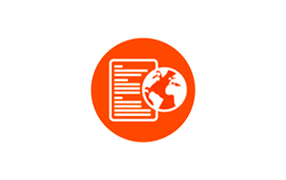Dangerous Goods Packaging
Buy now
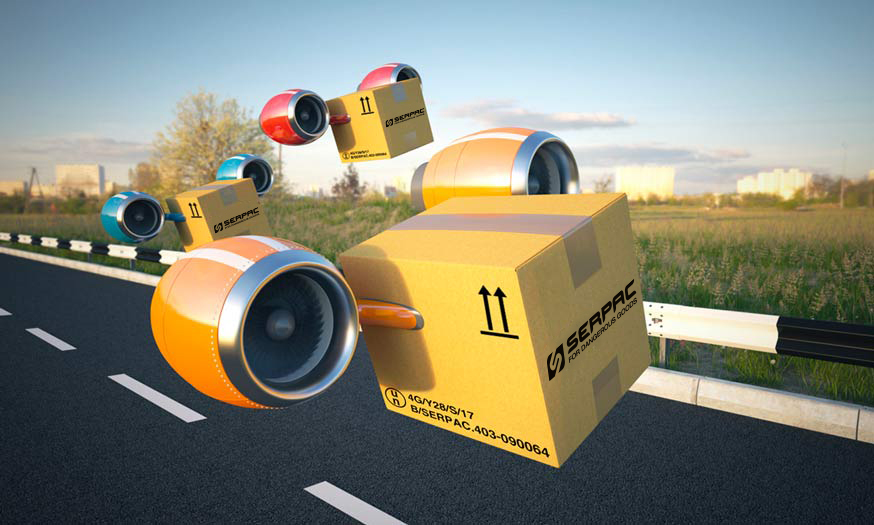
Dangerous Goods Packaging
Buy now
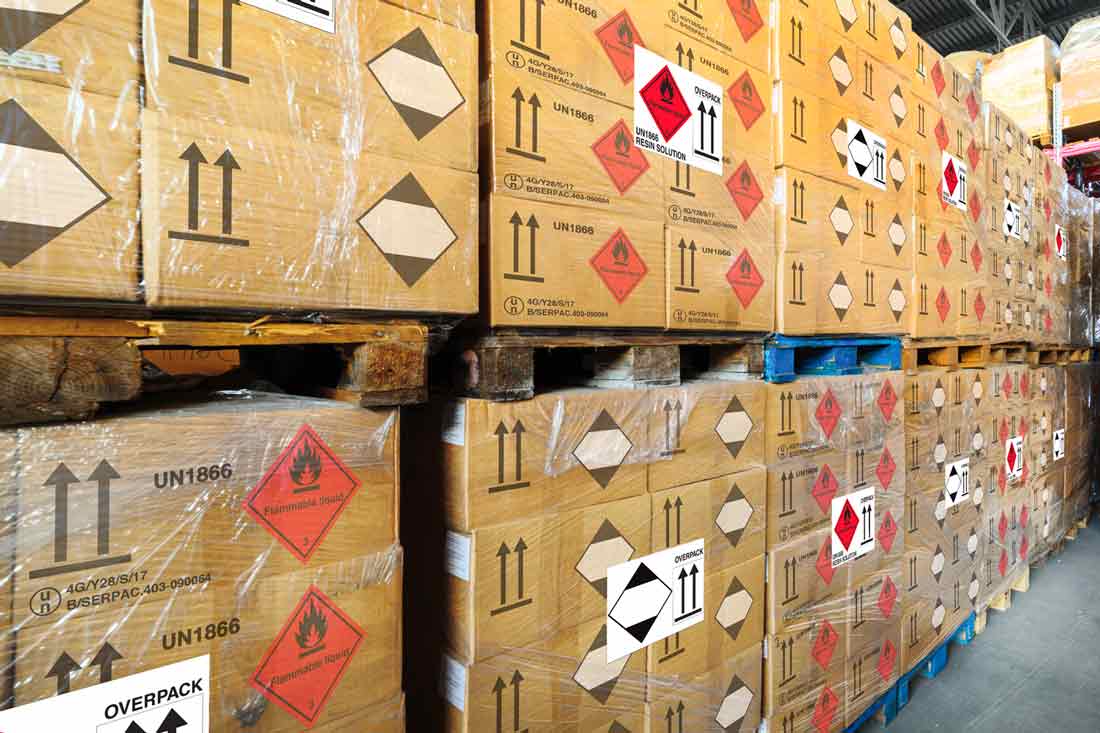
4G or 4GV? Choose the correct packaging
1. Dangerous goods packaging: key points
When you work in the dangerous goods (DG) field you must pay attention to every single ring of the production, transport, and distribution chains.
Because you deal with such products, you must take care of every single detail:a small mistake can cause big damages – to your goods, to your company and to our environment.
Be careful with every single step of the process: from the choice of the right packaging to the proper label, everything is extremely important.
Let’s start with this: when we talk about packaging, we immediately think about fibreboard boxes, but this kind of packaging is not always suitable for all sorts of goods. Every category of goods needs a different solution that changes also according to the quantity of transported goods and the chosen transport mode (by road, railroad, inland waterways, sea, and air).
We can name an infinite number of packaging types available on the market, so let’s start with an example to make things clear.

Let’s think of a dangerous liquid substance: it may be contained in a single packaging or in a combination packaging.
Also: according to the chosen type of packaging sent and the quantity to be shipped, you will have to choose whether to use or not anUN-certified packaging.
You can choose to group up all the packagings in one shipment, for instance on a pallet: that’s when we talk about “overpack”.
Furthermore, when you ship dangerous goods with a combination packaging, you not only have to take care of the outer packaging, but also of the inner packagings.
2. Test and UN-certification: to ship in compliance with the law.
Distributing and transporting hazardous goods is a matter of big care that we should never underestimate.
There are many regulations that give directions about the most suitable packaging.
Especially, the use of UN-certified packaging to ship of dangerous goods is fundamental, but just a few exceptions.
Some shippers think they can spare money and choose non-certified boxes, and they risk therefore a block on shipments and hefty penalties What do we mean here by “certified”? It’s a process of validation on a certain packaging, that starts with a series of tests performed by an authorized body and ends up with the issue of a certification by the same organization.
Of course, this implies certain risks: even if two boxes might appear identical, their performance may be different.
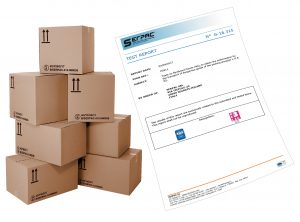
Everything depends on the professionality, the attention and the care used when the packaging samples are designed and produced. In order to avoid any incident or problem when shipping and transporting dangerous goods, it is necessary to check thoroughly the certification report issued by the certification body that performed the tests.
This document must contain different instructions, such as: prototype details, packaging use limitations and related marks. Hence, the so-called “test report” is the document that lists all the tests that the packaging had to go through as well as for what kind of inner packaging or product has been tested.
Does the certification expire? It depends on the body issuing the certificate.
For instance, certificates issued by Serpac do not expire but need an annual renewal and periodic packaging production checks as defined by different regulations: ADR, RID, ADN, IMDG and ICAO-TI / IATA.
3. Rules and penalties
Every transport mode follows the related regulation. Looking at the ones listed in the previous paragraph we might look at:
- ADR (European Agreement concerning the International Carriage of Dangerous Goods by Road): it is a agreement signed in 1957 about the transport of dangerous goods by road. In Italy it has been ratified with the law article 1839/1962. This agreement mainly includes a classification of dangerous goods and hazardous materials, norms about safety and packaging, rules about means of transport and norms about qualification of drivers;

- RID (Règlement concernant le transport International ferroviaire des marchandises Dangereuses): it is about transport of dangerous goods by railroad;
- ADN (European Agreement concerning the International Carriage of Dangerous Goods by Inland Waterways): it was signed in Geneva and aims mainly to protect inland waterways transports and reduce their impact on the environment; - IMDG (International Maritime Dangerous Goods Code): it is the norm ruling transports of dangerous goods by sea;
- ICAO-TI/IATA protects dangerous goods transports by air. The misunderstanding or non-compliance with all these rules and regulations may lead to hefty fines and penalties. If a packaging is not up to standards or not suitable for the transport of a certain products, the applied sanction may vary a lot according to the type of shipment. Lately there have been more and more checks, for example during an inspection of dangerous good shipped by air, a French company has received a fine of 45,000 euro.
4. How to choose the perfect match packaging for your dangerous goods
Once you’ve understood how important the packaging is, you must act. Choosing the suitable packaging for your goods or, to be more precise, packagings (when we talk about combination packaging) is the next step to be taken. On one side we’ve underlined the importance of certification as a tool to protect the integrity of products, on the other hand we must have it clear in our mind that there are different kinds of packaging. Understanding the difference between one and the others is the first, fundamental step to make the right choice. Let’s look at some of them.
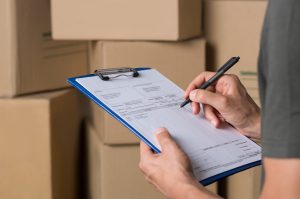
The first kind is the so-called UN 4G, which is a fibreboard box that can be used only in combination with the inner packaging(s) it was certified with. If you buy the inner or outer packaging from a different supplier than the one who made the certified prototypes, will void the certification. The second kind is the so-called UN-certified 4GV that, unlike 4G, can be used in combination with different inner receptacles. Of course 4GVs can be used to ship different product groups, such as corrosives, gases, or flammable liquid substances. What matters here is to comply with certain rules about packaging. Another variation is given by the quantity of shipped goods: to ship in Limited Quantity, you must use LQ packaging, which is made on purpose. Whilst, for Excepted Quantity shipments, you will use EQ packaging. Both LQ and EQ packaging must comply with certain resistance and hardness standards as written in the related regulations.
5. ADR consultant for a 100% OK delivery
ADR also states that it is compulsory for a company dealing with dangerous goods shipment, to name an ADR consultant (DGSA), but a few exceptions. The consultant must be appointed directly from the company and must be confirmed with the local Infrastructure Ministry’s DoT. If you don’t, the company can be fined with a sanction.

Just to sum up, what are the main activity of ADR consultants? Their main task is to be “guarantors of the norms”, which means they are responsible for enforcing all the directives of the ADR and spots all the main risks of incidents. Other than this, they will support the company through a continuous consulting service; furthermore, they shall write the annual audit about transport activities and the business generated by the company and, in case of any incident, write an incident report.


